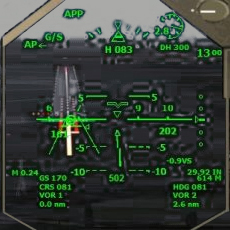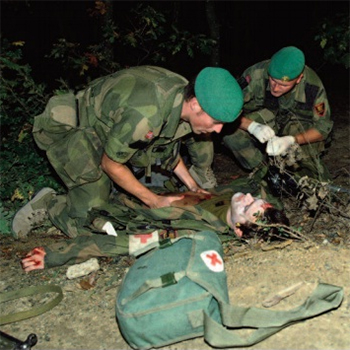Modernizing Military Training for Today's Threats

Introduction
The world is changing, and so are the threats our military faces. To stay ready, our armed forces are using new kinds of training and simulation technologies. These tools help them get better at dealing with the complex challenges of today's world. Let's take a closer look at how these technologies are helping our military prepare for modern threats.
How Things Have Changed?
Military training used to be mostly about practicing with real weapons and doing exercises in the field. But now, things are different. We have cool new technologies like virtual reality and augmented reality that make training more like playing a video game. These let soldiers practice their skills and learn to make good decisions without any real danger.
Learning with VR and AR
With virtual reality, soldiers can practice all sorts of things, like handling weapons and making quick decisions, in a fake but very realistic setting. Augmented reality helps them too, by showing digital information on top of what they're seeing in the real world. This can include things like maps and where the bad guys might be hiding.
Simulators for Real-Life Practice
There are also special machines called simulators that help soldiers feel like they're doing the real thing, even though they're not. For example, there are flight simulators that let pilots practice flying without actually being in a plane. These simulators help soldiers get really good at what they do without any risk.
Smart Computers for Smart Soldiers
Computers are getting really good at thinking like humans. In the military, they use these smart computers to help soldiers get ready for different situations. They can predict what might happen and help soldiers learn how to make good choices. These computers can also understand how each soldier learns best and help them get better at their job.
Cyber Safety Training
We all know how important it is to be safe online. The military also needs to be safe from cyber-attacks. They use special training to practice dealing with these kinds of attacks. This helps them learn how to stop the bad guys from doing harm. They also practice what to do if something goes wrong with their computers.
Being Ethical and Legal
Using these technologies comes with some big responsibilities. It's important for the military to follow the rules and be fair. They have to be careful not to forget about what's right and wrong, even when they're just practicing. They also need to keep their secrets safe from the bad guys who might try to steal them.
The Future of Military Training
Enhancing military capabilities remains a constant pursuit, with a focus on cutting-edge technology such as high-speed computers and advanced robotics. Collaborative efforts with other nations will continue to ensure global alignment in combatting threats.
The People Behind the Technology
While technology plays a crucial role, it's the people who make it all work. Trainers and instructors in the military are experts at using these new technologies to teach soldiers how to be their best. They know how to make the training fun and interesting so that soldiers stay focused and learn quickly. Their experience and knowledge help the soldiers feel confident and prepared for any situation.
Challenges and Learning from Mistakes
Using these new technologies isn't always easy. Sometimes things don't go as planned, and that's okay. In fact, it's a part of the learning process. When something goes wrong during training, it's a chance for the military to figure out what happened and how to do better next time. Learning from these mistakes makes the soldiers even better prepared for when they face real challenges.
Keeping Our Information Safe
One big worry with all this technology is keeping our secrets safe. The military has to be really careful about who gets to use these training programs and who has access to all the information. They have special ways of keeping everything secure, like using codes and locks that only certain people can open. This way, they can be sure that their plans and important information won't get into the wrong hands.
The Importance of Teamwork
In the military, working as a team is super important. These new technologies help soldiers learn how to work together better. They can practice talking to each other and making decisions as a group. This way, when they're out in the field, they know how to support each other and get the job done as a team. It's all about making sure everyone stays safe and gets the mission done right.
The Role of Families and Communities
The families and communities of military personnel also play a vital role in supporting the use of these technologies. They understand the importance of the training and how it helps keep their loved ones safe. By supporting the soldiers at home, they contribute to the overall strength and resilience of the military force. Their understanding and encouragement create a strong foundation for the soldiers to excel in their duties.
Adapting to Changing Threats
The world is always changing, and so are the threats that our military faces. With the help of these new technologies, the military can adapt quickly to new challenges and be ready for whatever comes their way. Whether it's a new kind of weapon or a different way of fighting, they'll be prepared to handle it and keep us safe.
Global Cooperation and Peacekeeping
In addition to preparing for combat, these training technologies also help the military work with other countries to keep the peace. By practicing together and learning how to communicate effectively, they can make sure that everyone stays safe and that conflicts can be resolved peacefully. This kind of cooperation is essential for maintaining stability and security on a global scale.
Learning from History
The military knows that looking back at what happened in the past can help them prepare for the future. By studying old battles and learning from what went right and what went wrong, they can make sure that they don't make the same mistakes again. This kind of reflection and analysis helps them stay one step ahead and be even more prepared for any situation.
Supporting Veterans and Their Families
After their service, veterans and their families need support to help them transition back to civilian life. These training technologies can also be used to help veterans learn new skills and find new jobs. By investing in their future, we show our appreciation for their service and make sure that they have the tools they need to succeed in their life after the military.
Continuous Improvement and Innovation
The military is always looking for ways to improve. They listen to feedback from soldiers and trainers to make sure that the training programs are the best they can be. They also keep an eye on new technologies and ways of doing things to make sure that they stay ahead of any potential threats. By constantly seeking to improve, they ensure that our military remains a force to be reckoned with.
Looking Ahead: A Safer Future
In the face of advancing technology, the military remains dedicated to enhancing training methodologies to ensure preparedness for any potential obstacles. By maintaining a proactive stance, they aim to safeguard the nation and the global community, fostering a secure and stable future.
A Safer World for Everyone
At its core, the integration of sophisticated training and simulation technologies is driven by the pursuit of a safer global landscape. With a conscientious and deliberate approach to these resources, the military endeavors to uphold perpetual readiness in safeguarding our nation and fundamental values. Their unwavering commitment grants us the peace of mind to rest assured, knowing they stand as sentinels of our collective security.
In summary, the incorporation of contemporary training and simulation technologies within the military serves a greater purpose beyond mere gadgetry. It signifies a concerted effort to equip our armed forces with the utmost capabilities, ensuring their preparedness to confront any adversity and safeguard our cherished way of living. Upholding responsible practices and persistent advancements, our military remains an unwavering bastion of resilience and protection in a dynamic global landscape.










